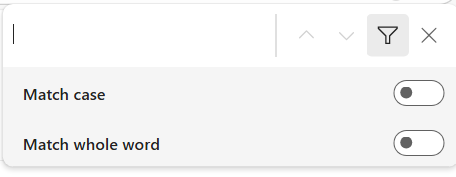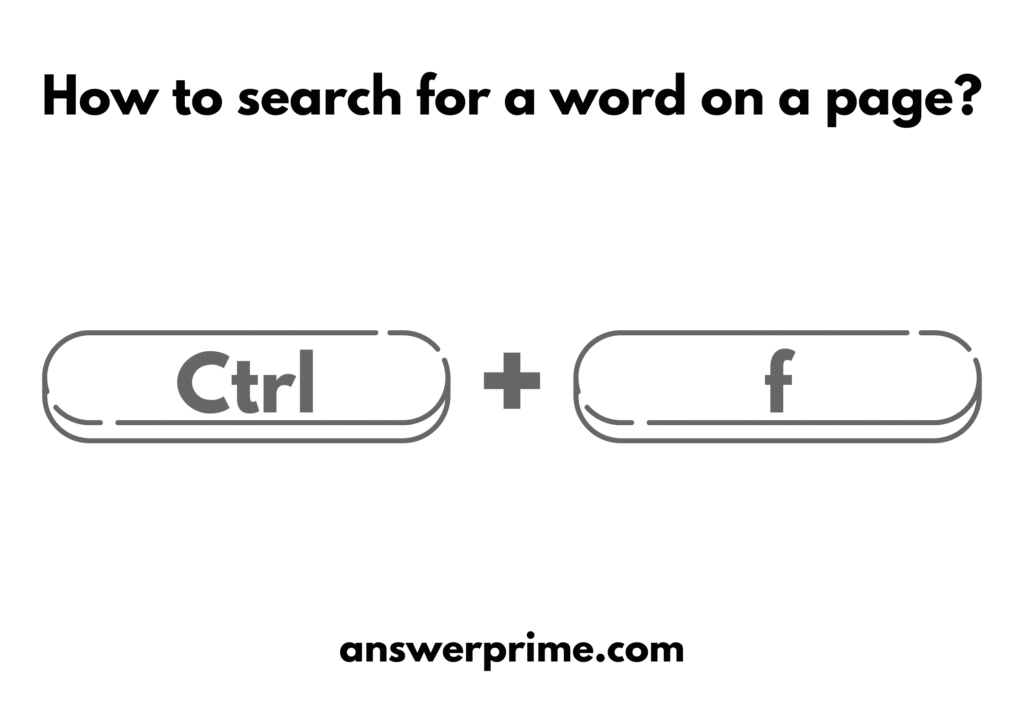Why and how to search for a word on a page? Searching for a specific word on a webpage or a word search in any document, web browser, or website is an important aspect when there is a lot of information to process, or for a quick understanding of a particular subject, without reading the entire document.
It is useful as it saves a lot of time and energy. A quick word search is much more efficient than processing tons of data.

How to search for a word on a page? – A step-by-step guide
There are a few ways for a word search, which are listed below,
Using the Find Function (Keyboard shortcuts)
The Find function is the quickest, easiest, and most convenient word search option
•Step I: Opening the find function
Press Ctrl+F on the keyboard (Windows and Linux)
Press Command+F on a MacBook (macOS)
•Step II: Search for the word in the search bar that appears
Once the first step is completed, a search bar may appear on the page. Type in the word and wait for the results.
This may take just a few seconds, and the result is a page highlighted with the word being searched for, along with the count of the number of times it appears on the page.
•Step III: Using the arrows to navigate through the word search
Using the arrows that appear in the search bar can help find the highlighted word on each line.
Note: Once you navigate smoothly and complete the word search, there is one more option (though it varies depending upon personal preference of the web browser or the software used to access the document), which may make this process even better. The filter search option may allow you to match the case of the word or simply match the whole word.

This (using the find function) method works for,
- Web pages on web browsers
- Word Documents or Google Docs
- Excel sheets
- Emails
- Code editors
•Searching for a word on a web page
For searching a word on a web page, the method remains the same,
- Ctrl+F or Command+F (to search within the webpage on a browser)
But there are some techniques to search for a word with the ever-advancing facilities on the internet,
Case-sensitive word searches
Some browsers, like Google Chrome, facilitate case-sensitive word searching.
- Open the three dots in the upper-right corner of the webpage → Find → Match case
•Searching for a word in a PDF
Accessing the word search option is also simple which is also similar,
- Press Ctrl+F on the keyboard (Windows and Linux)
- Press Command+F on a MacBook (macOS)
The difference here is,
- Using Ctrl+Shift+F to search across multiple PDFs (Advanced search feature)
•Searching for a word in Microsoft Word Document
Accessing the word search option is also simple which is also similar,
- Press Ctrl+F on the keyboard
For an Advanced Search,
- Home → Editing → Find → Advanced Find ( Search options include match case, whole words only, wildcards and search for formatting )
•Searching for a word on Mobile phones
•On Android Phones:
- Open the page in the browser
- Tap three dots for the menu
- Select Find in page
- Enter the keyword to be searched
•On iPhone or an iPad: (Both Safari and Chrome)
- Open the page in the browser
- Tap Share icon(for Safari) or Menu(for Chrome)
- Select Find on page or Find in page
- Enter the keyword to be searched
How to make your search experince better?
- Using specific keywords can help
- Partial search can also lead to all the words matching the keywords
- Using case-sensitive search options to find particular words like nouns, proper pronouns or even variables while coding
- Using advanced search filters to save time and achieve specific and detailed search results
- The specifics of the Keyword plays an inportant role for search
Why search for a word on a page?
There are certain benefits to a word search on a page,S
- It saves time
- It helps you navigate through lengthy information to understand the gist
- Locating specific information becomes uncomplicated
- Work becomes more efficient
- Missing out on important details can be avoided
- Tasks like Coding or technical work can be done more competently
- Accessing difficult web pages or documents can be made convenient
- Proofreading and editing can be done with more ease
- Comparing information can be made flexible
- An increase in work productivity is possible
In Conclusion
Searching for a specific word on a webpage or a word search in any document, web browser, or website is an important aspect when there is a lot of information to process, or for a quick understanding of a particular subject, without reading the entire document. Thus the knowledge of, “How to search for a word on a page?” is a small yet useful skill if acquired for an icreased productivity and work efficiency.
- How to call back a No Caller ID? - November 18, 2025
- How to select multiple Files? - November 18, 2025
- How to check if your phone is unlocked? - November 17, 2025

